| The
village of Agios Giorgios is situated between the Kefala hill and the
highest peak of the Dikti mountains (2.148 m).
|
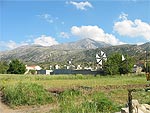
|
| As
the other villages on the plateau, also Agios Giorgios came into existence
as a metochi - a small cluster of interim houses, where the land workers
lived during the harvest time - in the period 1583-1630, after the
Venetians had permitted Lassithi to be cultivated again. The village was
mentioned the first time under the name of San Zorzi in Francesco
Basilicata's report to Venice in 1630. He also mentions that it consisted
of 10 houses.
|
| Many
of the inhabitants are still occupied with farming, and the daily shopping
is done at the local supermarket or a couple of old grocery stores. The
village is characterized by a relaxed atmosphere with kind people in the
small coffeehouses.
|
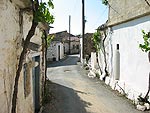 |
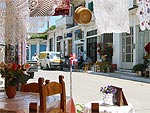
|
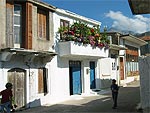
|
|
|
|
|
|
| Among
the sights must be mentioned the ethnographic museum. The museum is housed
in two buildings. The oldest is an old farmhouse from the beginning of the
19th century which narrowly escaped being consumed by fire, when the Turks
destroyed the village in 1866. At that occasion the inhabitant of the
house Eleni Kasapena was burnt to death, and the smoke-blackened joists of
the ceiling are still visible. |
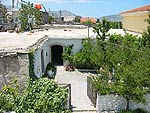
|
|
|
|
|
|
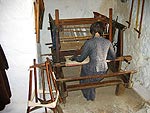 |
The
museum is set up with great delicacy so that you really get the impression
of being in a house as it appeared a couple of centuries ago. In the first
room are
among other things an old loom, a bed (often built on top of the
wine press) and an oven. |
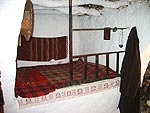
|
|
|
|
|
|
|
The
room has entrances to the store room, the stable and the barn. |
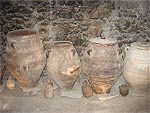
|
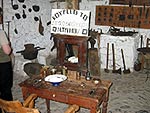 |
In
a separate room, various old tools from local workmen are displayed for
example a barber saloon, a smithy, a shoemaker |
|
and an
arrangement showing how new-woven fabric was softened (rasotrivio). |
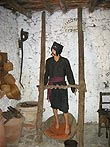
|
|
|
|
|
|
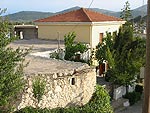 |
The
neighbouring building is a beautiful neoclassical
house
where the interior from a well-to-do family's sitting room is displayed on
the ground floor. On first floor are paintings by local artists, national
costumes and various woven handworks. In the back building are uniforms,
weapons and documents from World War I. |
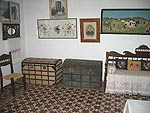
|
|
|
|
|
|
| Further
up the hill is a Venizelos museum.
Venizelos himself never visited Agios Giorgos, but as the ethnographic
museum is a popular excursion destination to many schools, the village
thought it would be a clever idea to also establish a museum for one of
modern Greece's greatest politicians.
|
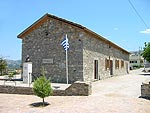
|
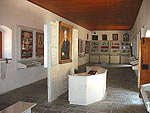 |
The
museum, situated in a stone-building from 1873, contains photographic
material and historic documents, displaying the life of Eleftherios
Venizelos from his birth in Mournies at Chania, his political carrier from
the appointment as minister of justice under Kritiki Politeia, the Theriso
rebellion in 1905 and his appointment as prime minister in Athens, up to
his death in France in 1905 and his funeral on the Profitis Ilias hill
outside Chania. |
|
A
kilometre outside the village towards Agios Konstantinos is a red lime
washed church. |
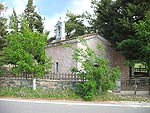
|
 |
In
this place stood earlier the Venetian's granary Moros, where the tenants
of the land had to deliver a part of their harvest to the authorities as
rent for the state-owned fields. Only scattered remains of the foundation
are visible today. |
|
|
|
|





